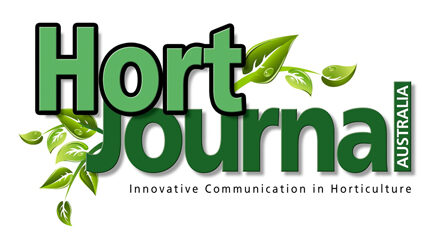Stressed plants? Kelp is on the way!
By Gabrielle Stannus
Living on an island state, I am never too far away from the coast, and therefore seaweed. Likewise, working in the horticultural industry, I regularly encounter seaweed in extract form when applying biostimulants at planting time. Up to now, I have only given a little thought as to how seaweed works to stimulate plant responses to stress. So, I spoke with an industry expert to find out how seaweed extracts work, and when horticulturists and landscapers should ideally use them.
Visiting the Queen Victoria Museum and Art Gallery in Launceston recently, I was reminded of the long association between humans and seaweed here in Tasmania. On display, was a kelp water carrier (kourah), a uniquely Tasmanian Aboriginal implement. Since well before colonisation, Tasmanian Aboriginals have used bull kelp (Durvillaea potatorum) fronds and shaped them by packing the kelp with sand to make these watertight vessels. They have also long collected bull kelp and other seaweed for consumption, roasting and soaking the latter to eat immediately or drying it for preservation1.
Fast forward to the 21st Century and several businesses now harvest storm-cast seaweed from Tasmania’s north-west and west coasts for use in the horticultural and agricultural industries. One of these is an indigenous-owned enterprise. The Circular Head Aboriginal Corporation (CHAC) has developed Tarkiner Organic Seaweed Extract, an indoor plant food, using bull kelp that the Peerapper People have been harvesting from West Point for many years. CHAC received support from Seasol International to develop this product, the latter another business with long-standing Tasmanian connections. Now owned by the DuluxGroup (Australia), the parent company of Yates, Seasol International began operations in Tasmania over fifty years ago and still maintains a manufacturing facility just outside Launceston. Their iconic Seasol brand includes a range of liquid and pelletised products for soil and foliar applications. These products are now made from a blend of brown kelp, including bull kelp collected from King Island and Marrawah on Tasmania’s west coast, Chile bull kelp (Durvillaea antarctica), and knotted kelp (Ascophyllum nodosum) sourced from the North Atlantic.
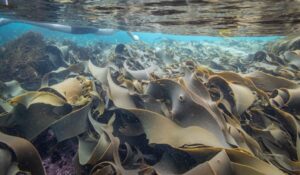
There are several other businesses collecting and processing seaweed in Tasmania. Kelpomix Tasmania harvests bull kelp from Granville Harbour on Tasmania’s west coast, using it to produce a range of solid and liquid garden and farm inputs for dairy, beef, sheep, viticulture, cropping/hobby farmers and gardeners. They have a Garden Mulch product that is suitable for gardens and lawns and can be used as both a compost and mulch. Kelpomix’s Liquid Kelp product can be used as a soil drench and/or foliage spray. It also produces a Premium Potting Mix with added kelp. Tasmanian Seaweed Fertilisers produce Marrawah Gold, made from bull kelp harvested on this island’s north-west coast. Its ‘Lawn and Garden’ liquid product contains seaweed extract made from the stipe (stem) of this seaweed and can be sprayed on the foliage of a plant or used as a soil drench. They also make a range of granular kelp products for horticultural applications.
These businesses obviously think they are onto a good thing! But if you are like me, you probably want to know why seaweed is so popular in our industry, and what does it do? According to Dr Tony Arioli, Director of Research and Development at Seasol International, seaweed extracts help plants to manage stress and to recover from stress. He says, ‘Every time your plant is stressed, it reduces the plant’s ability to achieve its full genetic potential, that is, to obtain its full yield. Whereas if you apply a seaweed biostimulant, that will trigger natural plant processes to enable the plant to condition itself to stress. For example, if you have got a plant in a greenhouse and you are going to take that plant and put it outside, you will usually put it under shade for the first day. That is, you will condition it before you take it out. That is essentially what we call “priming” the plant to be able to handle that stress. It is a natural phenomenon that plants have. However, you need to trigger this response, or at least understand it, to make sure that you do not just take the plant from the greenhouse straight into the field. Otherwise, the plant will wilt and struggle to establish itself, perhaps even dying in the process.
‘The way we can look at how the plants are responding is with some high-level science. There are genes involved in plant stress and recovering from plant stress. There are genes involved in making energy, and genes involved in taking up nutrients like nitrogen to make amino acids. You start to see that there is not just a single response from a plant to stress. The reason seaweed biostimulants are working is because they are triggering multiple plant responses very differently. They are managing the energy that is needed for the plant to grow under stress whilst managing the plant when it is under stress at the same time. Most chemicals will do one or the other. If you add a synthetic fertiliser to your plant, it will help it to grow, but it will not help it to cope with stress. If you give that plant an insecticide, that product will help manage the insects, but it will not help the plant to grow. So, it is a very different way of working. It is basically nature’s way of handling stress and growth at the same time. Seaweeds seem to be able to trigger those processes, with the science telling us that different pathways and biology that are activated.’
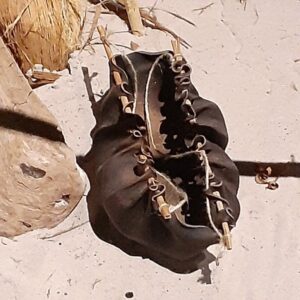
Systemic acquired resistance (SAR) pathway
‘The systemic acquired resistance pathway triggers and alerts other parts of the plant to be prepared for stress. It is a natural response. When you apply a seaweed biostimulant, it means that the whole plant is benefiting from the application, not just the root or the leaf. The SAR pathway is only one pathway associated with managing plant stress and defence mechanisms. However, the efficacy of seaweed biostimulants does not just come down to the activation of one pathway. It is the activation of energy pathways to make ATP (adenosine triphosphate). The TCA (tricarboxylic acid) cycle (also known as the Krebs cycle or citric acid cycle) is activated as well. So, all the sugars are metabolised from photosynthesis and other membrane changes happen as well. Instead of just activating one process, it activates a whole range of them that are highly specific to plant growth and stress management. If you apply a seaweed biostimulant before you have a plant stress, you help to condition it before the stress comes; if you add it to the plant at the time of stress, you are only helping it to recover.’
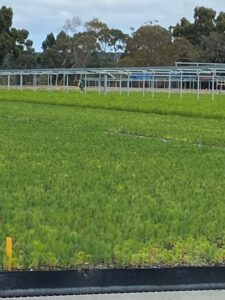
Whilst many seaweed biostimulants are 100% seaweed extract, some products on the market contain additional ingredients to promote plant growth. These include amino acids (building blocks for protein essential for plant processes including photosynthesis, nutrient transport and development) and fulvic acids (which enhance nutrient uptake and absorption, acting as natural chelating agents making minerals more readily available to plants). Dr Arioli says that up until recently many seaweed extracts did not work effectively when mixed with chelates. However, his team have now produced a chelated calcium seaweed biostimulant. ‘If you put this product in the soil, the calcium is spread throughout the plant because it is taken up through the roots. If you applied an application only to the foliage or fruit of your calcium-deficient plant, that is the only the point of contact that gets the benefit of the calcium. It is not mobilised to the rest of the plant,’ Dr Arioli explains.
When and how to apply seaweed biostimulants
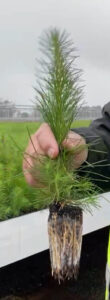
Dr Arioli has some general advice to landscapers and horticulturists about the most effective way to use a seaweed biostimulant when carrying out plantings on site: ‘My first tip is to buy a good looking, healthy plant to start with. My second tip is to pretreat it with a seaweed biostimulant (i.e. a day before removing it from its pot) and then plant it in with an application of that product as well. Transplanting is a huge stress on a plant. A plant works hard to create a root structure. When it is transplanted, that structure is disrupted, it is potentially inundated with a new microbiology, and it will probably have to cope with a different soil type. You do not want to add synthetic nitrogen when you have just planted a plant. You want something that is going to help the plant to grow and give it a boost without compromising its stress tolerance.’
Dr Arioli adds that if you want to achieve maximum yield, then you also want to minimise the number of stress events that happen during the growing season: ‘Stress events could be related to the climate. However, stress events also include developmental changes in a plant. If a plant is about to flower, it requires a whole new transition to the nutrition that it needs. Once the plant is in flower, it might be pollinated and therefore develop fruit, requiring carbohydrates. If you want to increase flowers, you may want to apply a seaweed biostimulant when there are young buds on the plant before they open (before bud burst) so that the plant is better prepared for flowering.’
The effects of a seaweed extract can be achieved through different application methods such as spraying canopies of plants, soil fertigation, plant and soil drenching, subsurface fertigation, under-tree micro-sprinklers, and the dipping of plant roots in diluted solutions2. The application method of a seaweed biostimulant depends upon the needs of its user. If we take a liquid stimulant as our example, a maintenance gardener might use a watering can to apply it, whereas a nursery might employ a dosatron, and farmers now operate helicopters or drones to disperse these products. Dr Arioli says that no matter your application device, you may be able to save your business time and money by applying a seaweed biostimulant at the same time as other trace elements. He always recommends conducting a jar test especially when mixing with trace elements and specifically calcium nitrate.
Dr Arioli says that some wineries are now applying seaweed biostimulants to their crops via their irrigation system. Other vineyards apply them with a foliar application of copper or sulphate on a fortnightly basis. ‘I have seen councils water trees in the middle of summer. Especially during times of drought. If you add a seaweed extract at the same time, it will help the plant to survive the drought situation for longer, ’says Dr Arioli, ‘Of course, if the drought continues and the water runs out, the plants will die. However, this application will give those plants the ability to last for longer as the wilting process is slowed down. If you add a seaweed biostimulant to your existing irrigation system or regime, it is a two in one. You do not have to pay for the additional energy and/or labour used to make that second trip or irrigation.’
Climate change and seaweed
Whilst this seaweed industry is in a relatively healthy state, climate change could pose a threat to it. Bull kelp in Tasmania has yet to go the way of the giant kelp (Macrocystis pyrifera). This giant kelp was once abundant in eastern Tasmania; however, it has recently experienced extensive population decline in part due to the southerly incursion of warm oligotrophic East Australian Current (EAC) into this region3. Seasol International is working on a project to future-proof the supply of bull kelp into the industry together with the Blue Economy Cooperative Research Centre (CRC) and its partners, which include the University of Tasmania’s Institute for Marine and Antarctic Studies (IMAS).
‘We want to be able to cultivate this important seaweed in the ocean and do it in a sustainable way,’ Dr Arioli explains, ‘so this research is focussing on several barriers to this industry. Firstly, the reproductive biology of Durvillaea (potatorum) is not well understood, apart from the fact it grows in very rocky and turbulent waters. Secondly, there are no hatchery methods available to cultivate this seaweed. So even if you could collect this kelp, how would you generate the young sporelings and where would you grow them in the sea? What infrastructure would you have for them to grow on? Would it just be on a line? And for how long do you have to grow them for?’
Seaweed may help us to respond to climate change, at least when used as biostimulants in our gardens and landscapes. Dr Arioli says that there is a lot of talk about seaweed as a potential sequester of carbon emissions, something he says would not be easy to do, but, if possible, he claims could reduce greenhouse emissions quickly. Anticipating the more intense rainfall events that we are likely to experience as climate change continues, Seasol International is releasing a granular version of Seasol containing zyolite that can be spread on soil. ‘We have been trying to make something that is more suitable for wet situations. You can either leave it on the top or you can dig it into your soil if you want,’ says Dr Arioli.
One final tip … only use as much as you need!
The merit of seaweed extracts used as biostimulants in the horticultural industry is well-founded. However, like any plant food, you can have too much of a good thing! Regardless of which seaweed or other biostimulant, or fertiliser more generally, you choose to use on your nursery or garden plants, applying more than your plant needs is a wasteful and costly practice. My final advice I would like to leave with you is to encourage you to adopt the 4R Nutrient Stewardship concept in your business, if you are not already doing so. This concept recommends (i) applying the right source of nutrients, (ii) at the right rate, (iii) at the right time, and (iv) in the right place; and the principle includes matching the fertiliser (I would add biostimulant) applications to the crop needs and soil properties2. Doing otherwise is unsustainable for not only your business but our planet as well, as it creates waste and uses scarce resources inefficiently.
Postscript: Most of the science discussed in this article by Dr Arioli is based on research conducted by Seasol International in Australia and published in peer reviewed journals. The comments included here therefore mostly reflect the studies, results and field performance of Seasol.
Gabrielle Stannus
Inwardout Studio
M: 0400 431 277
E: gabrielle@inwardoutstudio.com
References
- Campbell, R. (2023). The Seaweed Supplement to Eat More Wild Tasmanian: Who, what and how of edible seaweeds cast on Tasmanian beaches. Fullers Publishing, Hobart.
- Arioli, T., Mattner, S.W., Tohidul Islam, Md., Tran, T.L.C., Weisser, M., Winberg, P. & Cahill, D.M. (2023, November 27). Applications of seaweed extracts in agriculture: An Australian perspective. Journal of Applied Phycology.
- Mabin, C.J.T., Johnson, C.R. & Wright, J.T. (2019, April 4). Physiological response to temperature, light, and nitrates in the giant kelp Macrocystis pyrifera from Tasmania, Australia. Marine Ecology Progress Series. 614, 1-19.
